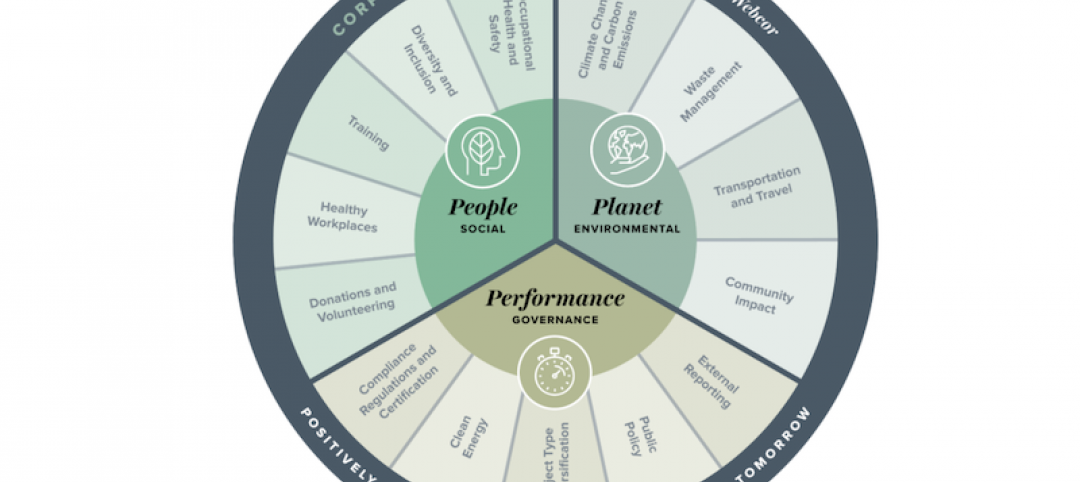The Department of Energy announced $39 million in awards for 18 projects that are developing technologies to transform buildings into net carbon storage structures.
Several of the awards are targeted for alternative concrete and cement materials as part of DOE’s drive to improve energy efficiency and reduce greenhouse gas emissions in the built environment. “There’s huge, untapped potential in reimagining building materials and construction techniques as carbon sinks,” Jennifer M. Granholm, DOE secretary, said in a press release.
Other projects funded by the DOE include:
- Development of “living” wood with the strength of steel, a self-healing capability, and combined carbon-sequestering benefits from wood and microbes by Purdue University.
- Development of a composite panel containing bio-derived natural fibers that exhibit excellent mechanical and functional properties while maintaining a carbon-negative footprint by SkyNano LLC.
- Design of a carbon-negative, medium-size building structure using a high-performance floor system with maximized surface area for carbon absorption that uses a novel carbon absorbing concrete mixture as a building material at the University of Pennsylvania.
The DOE awards are intended to help meet the goal of net zero emissions by 2050 outlined in an executive order signed by President Biden last year to make the federal government carbon neutral. The program aims for a 65% reduction in greenhouse gas emissions by 2030.
Related Stories
Wood | May 14, 2021
What's next for mass timber design?
An architect who has worked on some of the nation's largest and most significant mass timber construction projects shares his thoughts on the latest design trends and innovations in mass timber.
Healthcare Facilities | Apr 30, 2021
Registration and waiting: Weak points and an enduring strength
Changing how patients register and wait for appointments will enhance the healthcare industry’s ability to respond to crises.
University Buildings | Apr 29, 2021
The Weekly Show, April 29, 2021: COVID-19's impact on campus planning, and bird management strategies
This week on The Weekly show, BD+C Senior Editor John Caulfield interviews a duo of industry experts on 1) how campus planning has changed during the pandemic and 2) managing bird infestations on construction sites and completed buildings.
Multifamily Housing | Apr 22, 2021
The Weekly Show, Apr 22, 2021: COVID-19's impact on multifamily amenities
This week on The Weekly show, BD+C's Robert Cassidy speaks with three multifamily design experts about the impact of COVID-19 on apartment and condo amenities, based on the 2021 Multifamily Amenities Survey.
Market Data | Apr 20, 2021
The pandemic moves subs and vendors closer to technology
Consigli’s latest market outlook identifies building products that are high risk for future price increases.
Adaptive Reuse | Apr 15, 2021
The Weekly Show, Apr 15, 2021: The ins and outs of adaptive reuse, and sensors for real-time construction monitoring
This week on The Weekly show, BD+C editors speak with AEC industry leaders from PBDW Architects and Wohlsen Construction about what makes adaptive reuse projects successful, and sensors for real-time monitoring of concrete construction.
Contractors | Apr 9, 2021
Construction bidding activity ticks up in February
The Blue Book Network's Velocity Index measures month-to-month changes in bidding activity among construction firms across five building sectors and in all 50 states.
Industry Research | Apr 9, 2021
BD+C exclusive research: What building owners want from AEC firms
BD+C’s first-ever owners’ survey finds them focused on improving buildings’ performance for higher investment returns.

















